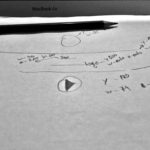
CSS Animation Hack with Keyframes and JavaScript
In the dynamic world of web development, where user engagement and visual appeal reign supreme, the art of CSS animation stands as a powerful tool for crafting captivating and interactive user experiences.
From subtle transitions to complex keyframe animations, CSS empowers developers to breathe life into static elements, turning web pages into immersive journeys.
Embracing the Creative Potential
The Power of CSS Animation
Animating each letter separately
In this exploration, we will dive into the art of animating each letter separately, a skill that opens up new possibilities for expressive web design. As we unravel the secrets of CSS keyframes and dynamic JavaScript, you’ll discover how to not only animate individual letters but also consolidate them into a harmonious whole for a truly polished presentation. So, fasten your seatbelts as we embark on a journey into the realm of CSS animation, where creativity knows no bounds, and each letter tells a story of its own.
Tip
From subtle transitions to complex keyframe animations, CSS empowers developers to breathe life into static elements, turning web pages into immersive journeys
Dancing Typography
Animate Each Letter for Visual Dynamism. In the realm of web design, the concept of “Dancing Typography” introduces a captivating approach to animating each letter individually, infusing visual dynamism into textual elements. By leveraging the power of CSS animations, developers can choreograph a stunning dance of letters, creating a lively and engaging presentation.
This technique not only adds a touch of whimsy to web typography but also allows designers to convey a sense of rhythm and energy, turning static text into a vibrant visual spectacle. “Dancing Typography” is a testament to the creative possibilities that CSS animation brings to the forefront, transforming the way we perceive and interact with textual content on the web.
Letter by Letter
Crafting Engaging CSS Animations.The art of “Letter by Letter” animation is a meticulous process of crafting engaging CSS animations that unfold the narrative of text in a dynamic and deliberate manner. By treating each letter as a unique entity, designers can introduce a sense of anticipation and suspense, capturing the viewer’s attention with every unfolding character.
This approach goes beyond mere visual appeal, offering a strategic way to guide the user’s focus and enhance the storytelling aspect of web content. “Letter by Letter” animation is a craft that demands precision and creativity, allowing designers to elevate the user experience by turning ordinary text into a captivating visual journey.
Dynamic Textual Symphony
Unleashing the Power of Individual Letter Animation.In the symphony of web design, the “Dynamic Textual Symphony” unfolds as a harmonious blend of creativity and technology. This approach involves unleashing the power of individual letter animation, where each letter contributes to the orchestration of a visual masterpiece.
By choreographing a sequence of CSS animations, designers can compose a dynamic textual experience that captures the essence of a symphony. The result is a visually appealing and rhythmically rich presentation, transforming static text into a dynamic and immersive journey. “Dynamic Textual Symphony” redefines how we perceive and interact with textual content, inviting users to engage with a symphony of letters that dance and resonate across the screen.
Web Typography Unleashed
Mastering the Art of Letter-by-Letter Animation. “Web Typography Unleashed” delves into the art of mastering letter-by-letter animation, a technique that goes beyond conventional design boundaries. This approach empowers designers to unleash the full potential of web typography by animating each letter with precision and purpose.
By seamlessly integrating CSS animations, designers can craft a visually striking and impactful presentation that communicates not only the message but also the emotion behind the text. “Web Typography Unleashed” signifies a departure from static design norms, inviting designers to push the boundaries and create immersive web experiences where letters come alive with meaning and intention.
Animating Alphabet
Elevate Your Design with Individual Letter Brilliance.The concept of “Animating Alphabet” invites designers to elevate their design prowess by harnessing the brilliance of individual letter animations. By treating each letter as a unique design element, this approach allows for a nuanced and visually rich presentation.
CSS animations become the brushstrokes, and letters transform into animated strokes of creativity. “Animating Alphabet” is not just about adding motion; it’s about infusing life and personality into textual content. This technique offers a unique opportunity to captivate audiences, leaving a lasting impression through a meticulously crafted dance of letters that defines the essence of innovative web design.
Elevate Your Web Design with The CSS Animations
- Cascading Style Sheets (CSS) is a powerful tool for web developers
- Enabling them to control the presentation of a web page and create engaging user experiences
- When it comes to adding life to a webpage, CSS animations play a crucial role
In this article, we’ll explore a creative CSS animation hack using keyframes and JavaScript to bring dynamism to your web designs.
CSS | CSS Keyframes | HTML | JavaScript
Understanding CSS Keyframes
Keyframes in CSS provide a way to control the intermediate steps in a CSS animation. They allow you to specify the style at certain points during the animation sequence. This is particularly useful when you want to create more complex and customized animations that go beyond simple transitions.
To get started, let’s create a basic CSS keyframe animation.
Example of a fade-in animation
@keyframes fadeIn {
from {
opacity: 0;
}
to {
opacity: 1;
}
}
.element-to-animate {
animation: fadeIn 1s ease-in-out;
}
In this example, the @keyframes rule defines the animation named fadeIn
It starts with an initial state (from) where the opacity is set to 0, and it ends with a final state (to) where the opacity is set to 1. The .element-to-animate class applies the animation with a duration of 1 second and an ease-in-out timing function.
The CSS Animation Hack
Now, let’s take our animations to the next level by dynamically generating individual animations for each letter in a text using JavaScript. This adds a unique touch to your web typography and makes your content more visually appealing.
Consider the following HTML structure
<div class="animated-text" id="myText">CSS Animation</div>
And the corresponding JavaScript to create animations for each letter
const textElement = document.getElementById('myText');
const text = textElement.innerText;
textElement.innerHTML = '';
for (let i = 0; i < text.length; i++) {
const letter = document.createElement('span');
letter.innerText = text[i];
letter.style.animation = `fadeIn 1s ease-in-out ${i * 0.1}s`;
textElement.appendChild(letter);
}
In this JavaScript code, we’re iterating through each letter in the text, creating a span element for each one, and applying the fadeIn animation with a dynamic delay based on the letter’s position. This results in a staggered fade-in effect for each letter.
Adding JavaScript Interactivity
To enhance user interaction, you can use JavaScript to trigger animations based on user actions.
For example, let’s create a button that, when clicked, will start the text animation
<button onclick="startAnimation()">Start Animation</button>
<div class="animated-text" id="myText">CSS Animation</div>
function startAnimation() {
const textElement = document.getElementById('myText');
const text = textElement.innerText;
textElement.innerHTML = '';
for (let i = 0; i < text.length; i++) {
const letter = document.createElement('span');
letter.innerText = text[i];
letter.style.animation = `fadeIn 1s ease-in-out ${i * 0.1}s`;
textElement.appendChild(letter);
}
}
This simple example demonstrates how JavaScript can be used to trigger animations, allowing you to create more dynamic and interactive web pages.
Optimizing for Performance
While adding animations can enhance the visual appeal of your website, it’s essential to consider performance. Too many animations or poorly optimized ones can lead to a sluggish user experience. Here are a few tips to optimize your CSS animations:
-
- Use Hardware Acceleration: Utilize hardware acceleration for smoother animations. This is achieved by applying animations to properties like transform and opacity.
-
- Minimize DOM Manipulation: Keep DOM manipulation to a minimum, especially during animations. Batch DOM updates whenever possible to reduce layout thrashing.
-
- Optimize Keyframe Animations: Be mindful of the number of keyframes and their complexity. Simplify animations where you can to improve performance.
-
- Debouncing and Throttling: If your animations are triggered by user interactions like scrolling, consider debouncing or throttling the event handlers to prevent excessive animations and improve performance.
Cross-browser Compatibility
- While modern browsers generally support CSS animations, it’s essential to consider cross-browser compatibility.
- Always check your animations in multiple browsers to ensure a consistent and reliable user experience.
- Consider using a CSS animation library like Animate.css or creating fallbacks for browsers that don’t fully support CSS animations.
Enhancing Web Typography
- In the realm of web development, the presentation of content is a crucial aspect of creating engaging and visually appealing websites.
- One intriguing way to elevate your web typography is by animating each letter individually, a technique that can be achieved through CSS keyframes and JavaScript.
Animating Each Letter and Consolidating Text Content
- Moreover, taking it a step further, we can optimize the presentation by consolidating the individual animations into a single cohesive span.
- In this exploration, we’ll delve into the process of animating each letter separately and subsequently consolidating them for a seamless and dynamic web typography experience.
CSS Animation for Each Single Letter Inside HTML div ID Element
Consider a scenario where you have multiple
CSS Animation for Each Single Letter Inside HTML div ID Element
The HTML CSS Animation Code Example
<div class="anim-one" id="animTextOne">CSS Animation for Each Single Letter Inside HTML div ID Element Text One</div>
<div class="anim-two" id="animTextTwo">CSS Animation for Each Single Letter Inside HTML div ID Element Text Two</div>
<div class="anim-three" id="animTextThree">CSS Animation for Each Single Letter Inside HTML div ID Element Text Three</div>
The CSS Animation Style Example
.anim-one span {
animation: fadeIn 1.0s ease-in-out;
animation-fill-mode: both;
}
.anim-two span {
animation: fadeIn 1.5s ease-in-out;
animation-fill-mode: both;
}
.anim-three span {
animation: fadeIn 2.0s ease-in-out;
animation-fill-mode: both;
}
span#endanim-animTextOne.endanim-anim-one, span#endanim-animTextTwo.endanim-anim-two, span#endanim-animTextThree.endanim-anim-three {
animation: fadeIn 1s ease-in-out 1s;
padding: 0px 0px 0px 0px;
margin: 0px 0px 0px 0px;
font-size: 14px;
text-align: justify;
transition: all 0.9s;
color: #f00;
font-weight: 700;
line-height: 1rem;
}
The JavaScript CSS Animation Function Example
// Create Our Animation Main Function - animateText by id
function animateText(id) {
const textElement = document.getElementById(id);
const text = textElement.innerText;
// Clear the original text content
textElement.innerHTML = '';
for (let i = 0; i < text.length; i++) {
const span = document.createElement('span');
span.innerText = text[i];
// Adjust the delay as needed - example - ${(i + 2) * 1}s
span.style.animationDelay = `${(i + 0.01) * 0.01}s`;
textElement.appendChild(span);
// Add animationend event listener to the last created span
if (i === text.length - 1) {
span.addEventListener('animationend', () => {
// Remove individual spans
textElement.innerHTML = '';
// Create a single span with the entire text
// When Animation End Remove all span apended with the textElement.appendChild(span);
const fullTextSpan = document.createElement('span');
// Adding New ID for the span after the span animations been removed after the end of the animation
fullTextSpan.setAttribute("id", `endanim-${id}`);
// Adding New CSS clas for the span after the span animations been removed after the end of the animation
fullTextSpan.setAttribute("class", `endanim-${id}`);
fullTextSpan.innerText = text;
textElement.appendChild(fullTextSpan);
});
}
}
}
// Call the function for each div id
animateText('animTextOne');
animateText('animTextTwo');
animateText('animTextThree');
Final Words
- Incorporating CSS animations with keyframes and JavaScript can significantly enhance the visual appeal and interactivity of your web projects.
- By leveraging the power of keyframes, you can create complex animations that go beyond simple transitions.
- The JavaScript integration allows for dynamic and interactive animations, providing a seamless user experience.
- Remember to strike a balance between aesthetics and performance.
- Optimize your animations to ensure they enhance your web design without compromising the overall user experience.
- Experiment with different animation styles, durations, and delays to find the perfect combination that suits your project.
- In the ever-evolving world of web development, staying creative and exploring new techniques like this CSS animation hack can set your projects apart and leave a lasting impression on your users.




